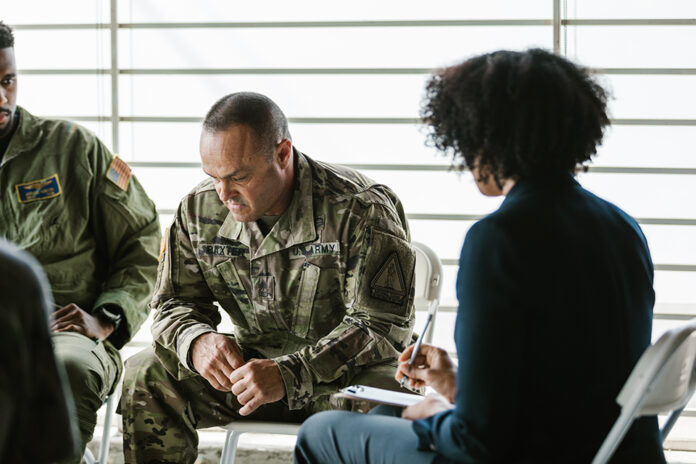It takes seven months for veterans to feel they’ve adapted to civilian life after active duty, new research suggests. A new survey of 1,000 U.S. military veterans revealed there are an average of three different major challenges on this journey.
Finding a job topped the list, with a third (33 percent) of respondents calling it their biggest hurdle. Other challenges included parting ways with their friends in the military and finding a purposeful career (28 percent each).
Conducted by OnePoll on behalf of Sport Clips Haircuts for its VFW’s “Sport Clips Help A Hero Scholarship” program, the survey also found that six in 10 (60 percent) veterans already had long-term goals in mind after leaving the military.
These goals included finding a purposeful civilian job (56 percent), home ownership (52 percent), and getting married and having children (46 percent).
“From serving their country to serving their communities, veterans bring an array of transferable skills to their civilian careers,” said Gordon Logan, founder and chairman of Sport Clips, and Air Force veteran. “While a meaningful job and career were a top goal for many, they may not have always been aware of all the resources available to help support them in their journey. It’s important to ensure the next generation of veterans knows about support programs and other services offered by veterans organizations such as the VFW.”
Some also noted milestones they had yet to experience when they left the military, such as pursuing higher education or a college degree (27 percent).
One in five (20 percent) revealed they had never created a resume at that point in time.
While the military taught many transferable skills, such as the ability to perform under pressure (50 percent), teamwork and collaboration (41 percent) and problem-solving (39 percent), it took an average of four months for veterans to find a civilian job.
To help boost their self-confidence during the adjustment to civilian life, a third of veterans (33 percent) took classes or continued their education.
Twenty-nine percent also credit their partner or spouse with helping them transition after their service.
Additionally, veterans shared their biggest tips in transitioning to civilian life, including taking your time to get adjusted, keeping a daily routine, starting to save your money before leaving the military, and continuing your education.
“One in five veterans polled said a lack of funds prevented them from pursuing their educational goals,” Logan added. “Whether they’re a first-time college student or continuing their education, the Help A Hero scholarship program gives service members and veterans can get the assistance they need to further their studies without incurring excessive debt.”
Veterans’ Biggest Non-health-related Challenges in Transitioning to Civilian Life
- Finding a job – 33 percent
- Parting ways with my friends in the military – 28 percent
- Finding a purposeful career – 28 percent
- Absence of familiar routine/structure – 23 percent
- Pursuing educational goals – 15 percent
- Adjusting to providing basic necessities (e.g., food, clothing, housing) – 15 percent
- Lack of financial support – 14 percent
- Reconnecting with family – 11 percent
- Unfamiliarity with post-military programs/resources – 11 percent
- Finding a new identity – 9 percent
- Lack of family/community support – 5 percent
Survey Methodology:
This random double-opt-in survey of 1,000 U.S. military veterans was commissioned by Sport Clips between Sept. 26 and Oct. 2, 2023. It was conducted by market research company OnePoll, whose team members are members of the Market Research Society and have corporate membership to the American Association for Public Opinion Research (AAPOR) and the European Society for Opinion and Marketing Research (ESOMAR).
— Press Release by talker.











